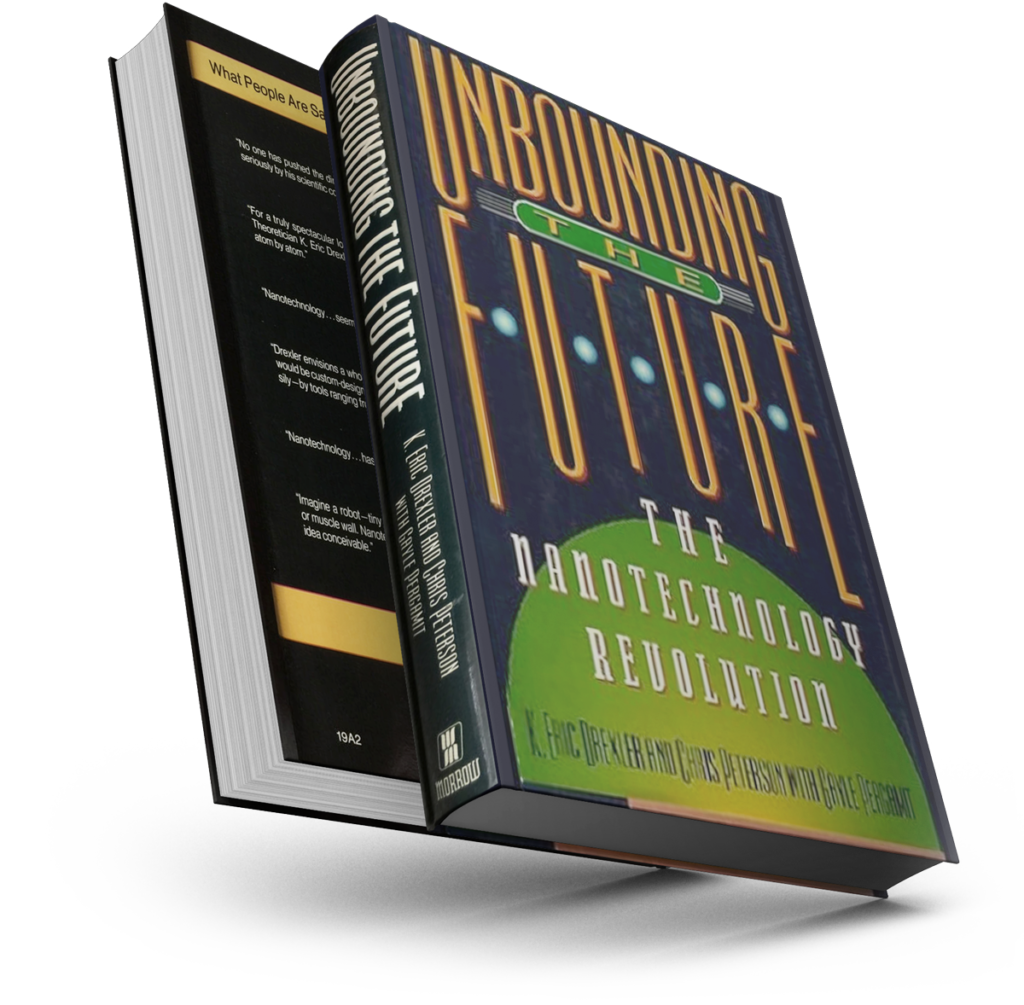
This lists further sources of nontechnical information on nanotechnology and related topics. (For more technical material, see the Technical Bibliography.)
This nonprofit organization was founded to address the opportunities and challenges posed by nanotechnology and other powerful anticipated technologies. Materials available include the Update newsletter, the Background orientation series, occasional papers, and conference tapes. Students and others planning careers in nanotechnology-related research can request Briefing #1: Studying Nanotechnology. The Foresight Institute sponsors conferences on both technical and policy issues raised by nanotechnology. Readers concerned about endangered species should inquire about the BioArchive Project. The institute’s address appears at the end of the Afterword.
The Foresight Institute on the WWW: http://www.foresight.org/
This first book on nanotechnology (Doubleday 1986) introduces the subject from a more abstract and long-term perspective. Topics covered include nanotechnology’s relationship to scientific knowledge, the evolution of ideas, artificial intelligence, human life span, limits to growth, healing the environment, prevention of technological abuse, space development, and the need for new social technologies—such as hypertext publishing and fact forums—to help us deal with rapid technological change.
Available in Britain from Fourth Estate, and in Japan from Personal Media (under the title Machines that Create: Nanotechnology).
Atkins, P.W. Molecules. (Scientific American Library Series #21, 1987). An elegantly written and heavily illustrated introduction to the molecular world, showing many molecules in everyday use.
Bennett, James C. Creating Competitive Space Trade: a Common Market for Space Enterprise.Santa Monica, CA: Reason Foundation Policy Study No. 123 (August 1990), Proposed a framework for international technology regulation which could be extended to nanotechnology.
Brand, Stewart. The Media Lab: Inventing the Future at MIT.New York: Viking, 1987. Vividly describes the Lab’s work on the personalized information technologies we’ll be using tomorrow.
Burgess, Jeremy. Microcosmos. New York: Cambridge University Press, 1987. A collection of beautiful images of the microscale world.
Burnham, John C. How Superstition Won and Science Lost.New Brunswick, NJ: Rutgers, 1987. Tells the story of scientists’ declining effort to reaching out to the public, and the resulting erosion of public understanding (which ultimately leads to flawed public policy).
Drexler, K. Eric. “Exploring Future Technologies,” in Doing Science: The Reality Club ed. John Brockman. New York: Prentice Hall, 1991. An essay describing the exploratory engineering approach to understanding future technological possibilities.
Drexler, K. Eric. “Technologies of Danger and Wisdom,” in Directions and Implications of Advanced Computing, Vol. 1 eds. Jonathan P. Jacky and Douglas Schuler, eds. Norwood, NJ: Ablex, 1989. This essay discusses how computer technologies could be used to strengthen social mechanisms for dealing with complex problems. The volume is based on the first major conference of the Computer Professionals for Social Responsibility.
Milbrath, Lester. Envisioning a Sustainable Society. Albany NJ: State University of New York Press, 1989. A broad work which includes a brief discussion of nanotechnology’s potential effects.
Wildavsky, Aaron. Searching for Safety. New Brunswick, HJ: Bowling Green State University, 1988. This book documents how using new technologies can—and does—reduce old risks more rapidly than it creates new ones, and how either too little or too much caution can decrease safety.
Encyclopedia Britannica’s Science and the Future Yearbook 1990. This annual includes an eighteen-page introduction to nanotechnology; offprints are available from the Foresight Institute (address appears in the Afterword).
“Computer Recreations.” Scientific American, Jan. 1988. A column describing molecular mechanical computers.
“The Invisible Factory.” The Economist, Dec. 9, 1989. A brief, clear, and technically accurate introduction to nanotechnology.
“Where the Next Fortunes Will be Made.” Fortune, Dec. 5, 1988. Includes a discussion of the business consequences of nanotechnology.
Information and publications on biostasis and future medical capabilities are available from the Alcor Life Extension Foundation, 12327 Doherty Street, Riverside, CA 92503; telephone (714) 736-1703. [Current address and phone: 7895 E. Acoma Dr., Ste. 110, Scottsdale, AZ 85260; 1-800-367-2228]
Science News is a weekly newsmagazine, accessible to the nontechnical reader. A good guide to (among other things) the latest developments on the path to nanotechnology.